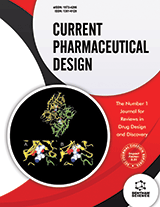Abstract
The possible therapeutic use of marijuanas active principles, the cannabinoids, is currently being debated. It is now known that these substances exert several of their pharmacological actions by activating specific cell membrane receptors, the CB 1 and CB 2 cannabinoid receptor subtypes. This knowledge led to the design of synthetic cannabinoid agonists and antagonists with high therapeutic potential. The recent discovery of the endocannabinoids, i.e. endogenous metabolites capable of activating the cannabinoid receptors, and the understanding of the molecular mechanisms leading to their biosynthesis and inactivation, opened a new era in research on the pharmaceutical applications of cannabinoids. Ongoing studies on the pathological and physiological conditions regulating the tissue levels of endocannabinoids, and on the pharmacological activity of these compounds and their derivatives, may provide a lead for the development of new drugs for the treatment of nervous and immune disorders, cardiovascular diseases, pain, inflammation and cancer. These studies are reviewed in this article with special emphasis on the chemical features that determine the interaction of endocannabinoids with the proteins mediating their activity and degradation.
Keywords: Endocannabinoids, Targets Drug Development, marijuana s active principles, Cannabinoids, CB1 cannabinoid receptor subtypes, CB2 cannabinoid receptor subtypes, synthetic cannabinoid agonists, antagonists, therapeutic potential, Nervous, Immnue disorders, Cardiovascular diseases, Pain, Inflammation, Cancer, Polyunsaturated fatty acids (PUFAs), Cannabis sativa, Anandamides, Ethanolamides, Arachidonate homologue, Immunoassays, Anandamide, 2 Arachidonoyl glycerol, PHARMACOLOGICAL, Tetrahydrocannabinol, Central nervous system, Endo Cannabinoid, Aging, Cronic THC treatment, LPS treatment, IgE challenge, Nociceptive stimulus, Epidermal cells, Blood Cells, Reproductive System, Cell Damage, BIOSYNTHESIS, Degradation, Lipase, MAG lipase, The Anandamide Membrane Transporter, FAAH, Anandamide analogues, Anandamide transporter, Amide hydrolase, Fatty Acid, Vanilloids
Current Pharmaceutical Design
Title: Endocannabinoids New Targets for Drug Development
Volume: 6 Issue: 13
Author(s): Vincenzo Di Marzo, Tiziana Bisogno and Luciano De Petrocellis
Affiliation:
Keywords: Endocannabinoids, Targets Drug Development, marijuana s active principles, Cannabinoids, CB1 cannabinoid receptor subtypes, CB2 cannabinoid receptor subtypes, synthetic cannabinoid agonists, antagonists, therapeutic potential, Nervous, Immnue disorders, Cardiovascular diseases, Pain, Inflammation, Cancer, Polyunsaturated fatty acids (PUFAs), Cannabis sativa, Anandamides, Ethanolamides, Arachidonate homologue, Immunoassays, Anandamide, 2 Arachidonoyl glycerol, PHARMACOLOGICAL, Tetrahydrocannabinol, Central nervous system, Endo Cannabinoid, Aging, Cronic THC treatment, LPS treatment, IgE challenge, Nociceptive stimulus, Epidermal cells, Blood Cells, Reproductive System, Cell Damage, BIOSYNTHESIS, Degradation, Lipase, MAG lipase, The Anandamide Membrane Transporter, FAAH, Anandamide analogues, Anandamide transporter, Amide hydrolase, Fatty Acid, Vanilloids
Abstract: The possible therapeutic use of marijuanas active principles, the cannabinoids, is currently being debated. It is now known that these substances exert several of their pharmacological actions by activating specific cell membrane receptors, the CB 1 and CB 2 cannabinoid receptor subtypes. This knowledge led to the design of synthetic cannabinoid agonists and antagonists with high therapeutic potential. The recent discovery of the endocannabinoids, i.e. endogenous metabolites capable of activating the cannabinoid receptors, and the understanding of the molecular mechanisms leading to their biosynthesis and inactivation, opened a new era in research on the pharmaceutical applications of cannabinoids. Ongoing studies on the pathological and physiological conditions regulating the tissue levels of endocannabinoids, and on the pharmacological activity of these compounds and their derivatives, may provide a lead for the development of new drugs for the treatment of nervous and immune disorders, cardiovascular diseases, pain, inflammation and cancer. These studies are reviewed in this article with special emphasis on the chemical features that determine the interaction of endocannabinoids with the proteins mediating their activity and degradation.
Export Options
About this article
Cite this article as:
Marzo Di Vincenzo, Bisogno Tiziana and Petrocellis De Luciano, Endocannabinoids New Targets for Drug Development, Current Pharmaceutical Design 2000; 6 (13) . https://dx.doi.org/10.2174/1381612003399365
| DOI https://dx.doi.org/10.2174/1381612003399365 |
Print ISSN 1381-6128 |
| Publisher Name Bentham Science Publisher |
Online ISSN 1873-4286 |
 8
8
- Author Guidelines
- Bentham Author Support Services (BASS)
- Graphical Abstracts
- Fabricating and Stating False Information
- Research Misconduct
- Post Publication Discussions and Corrections
- Publishing Ethics and Rectitude
- Increase Visibility of Your Article
- Archiving Policies
- Peer Review Workflow
- Order Your Article Before Print
- Promote Your Article
- Manuscript Transfer Facility
- Editorial Policies
- Allegations from Whistleblowers
- Announcements


























